The Royal Navy’s Multi-Role Support Ship (MRSS) programme, recently rebranded as the Multi-Role Strike Ship, aims to replace the retired Albion-class LPDs and the soldiering on Bay-class LSD(A)s, and RFA Argus in the early 2030s.
In short, MRSS must deliver aviation and well dock facilities, modular mission bays, robust medical and command functions, and the ability to operate unmanned systems in contested environments.
Among potential designs, the Damen Enforcer family of landing platform docks is a credible candidate. Developed in the 1990s by the Dutch Schelde yard (now Damen), the Enforcer underpins the Netherlands’ Rotterdam class, Spain’s Galicia class, and the UK’s Bay-class vessels. Its proven operational record and adaptable design have led some analysts to suggest that an evolved Enforcer could form the basis of MRSS.
Track record
The Enforcer family typically displaces between 13,000 and 16,000 tonnes and measures 160–180 metres in length. A hallmark is the combination of a stern well dock for landing craft and vehicles with a flight deck and hangar for helicopters.
For example, the Dutch Rotterdam-class carries 600 troops, over 30 main battle tanks, and operates two large helicopters, while also hosting a Class II hospital. The Bay-class, a derivative of the Enforcer, can carry 24 tanks or 150 trucks and has a Chinook-capable flight deck.
Operationally, Enforcer-derived ships have proved versatile. The Netherlands’ Rotterdam has led NATO operations off Somalia, supported disaster relief in the Caribbean, and served as a command platform in multinational exercises. Spain’s Galicia-class LPDs have been deployed for humanitarian assistance and counter-piracy.
The UK’s Bay-class has been described as “flexible and value for money”, supporting commando deployments, anti-narcotics patrols, and hurricane relief. Australia’s acquisition of the ex-RFA Largs Bay (now HMAS Choules) further demonstrates the design’s utility.
MRSS Requirements
The MRSS is expected to deliver far more than simple lift capacity. It must combine the functions of an amphibious assault ship, a command hub, a hospital ship, and a modular mothership for unmanned systems.
The Damen Enforcer family of hulls can be tailored with different superstructures and internal layouts, with vehicle and cargo decks that can be reconfigured or containerised to create the kind of modular mission bays the Royal Navy is seeking. The aviation facilities are already generous, with large flight decks and hangars able to support multiple helicopters, and the largest variants designed to operate Chinooks – a good match for the emphasis on heavy-lift and UAV integration.
The well dock has space for multiple landing craft, and with adaptation could host the Royal Navy’s next-generation Commando Utility Craft or unmanned surface vehicles. The Dutch Rotterdam class, a close relative of the Enforcer, already carries a full hospital and has functioned as a joint operations headquarters, showing that medical and command facilities can be integrated into the design without difficulty.
Where the Enforcer does fall short is in survivability and self-defence. Current examples were built to auxiliary standards and fitted only for operations in permissive environments, with light defensive armament and limited combat hardening. By contrast, the MRSS will be expected to operate in contested littorals, which calls for stronger protection and more advanced defensive systems.
An Enforcer adapted for British use would need substantial upgrades, with decoy launchers, close-in weapons, and reserved space for missile cells, if it is to meet the Royal Navy’s higher standard of survivability.
| Variant | Length (m) | Beam (m) | Speed (kn) | Crew | Embarked force (EMF) |
|---|---|---|---|---|---|
| Enforcer 18028 | 180 | 28 | 18 | ~155 | 590–790 |
| Enforcer 16828 | 168 | 28 | 18 | ~147 | 510–680 |
| Enforcer 15628 | 156 | 28 | 18 | ~147 | 430–560 |
| Enforcer 14428 | 144 | 28 | 18 | ~124 | 370–480 |
| Enforcer 14426 | 144 | 26 | 18 | ~95 | 340–430 |
| Enforcer 13226 | 132 | 26 | 18 | ~95 | 260–350 |
| Enforcer 12026 | 120 | 26 | 18 | ~90 | 200–270 |
The larger 180- and 168-metre variants are closest in scale to the Royal Navy’s Bay-class LSD(A)s and would provide the lift capacity and aviation facilities expected of MRSS.
The mid-range 156- and 144-metre hulls offer a balance of troop and vehicle capacity with lower manning demands, potentially suiting constabulary or regional deployment roles. The smaller 132- and 120-metre designs are more modest in scale, with embarked forces under 350, and would be better aligned with lower-end amphibious or auxiliary missions rather than the RN’s stated requirement for a fully capable multi-role strike ship.
Industrial reality
Technical suitability alone does not determine feasibility, though. The UK’s National Shipbuilding Strategy mandates that major naval vessels be built in Britain by UK-led teams. The political backlash around foreign-led bids for the Fleet Solid Support programme underscores the sensitivity.
Any Damen involvement in MRSS would therefore require a UK-based build strategy. This could involve Damen providing design expertise while construction occurs at UK yards. A joint venture or licensing arrangement is plausible, echoing the UK–Netherlands framework signed in 2023 for amphibious cooperation and more recently the Navantia UK build of the Fleet Solid Support Ships.
Damen has signalled interest in such collaboration, stressing that its Enforcer designs can be adapted to UK requirements. But political realities mean the company could not lead the MRSS bid. Instead, it would likely need to partner with a UK prime within a “Team UK” structure.
The Enforcer’s strengths lie in its mature, adaptable design and proven service record. It offers the RN a baseline with a large well dock, aviation facilities, medical and command space, and modular capacity. The Bay-class experience already demonstrates that an Enforcer derivative can meet British operational needs.
The weaknesses are primarily in combat resilience. MRSS is envisaged as a “strike” platform, not a low-threat auxiliary. The Enforcer would need major enhancements in defensive systems and survivability standards. While technically feasible, this raises questions about whether adapting an existing design or developing a purpose-built one is more cost-effective.
Is it feasible?
The Enforcer family remains one of the more credible starting points for MRSS, with a long record of service and the flexibility to host modular payloads and unmanned systems.
To meet Royal Navy requirements, though, any derivative would need a thorough rethink of its survivability standards and a commitment to UK-based construction. The design only becomes politically acceptable if it is delivered through a partnership that strengthens domestic shipbuilding.


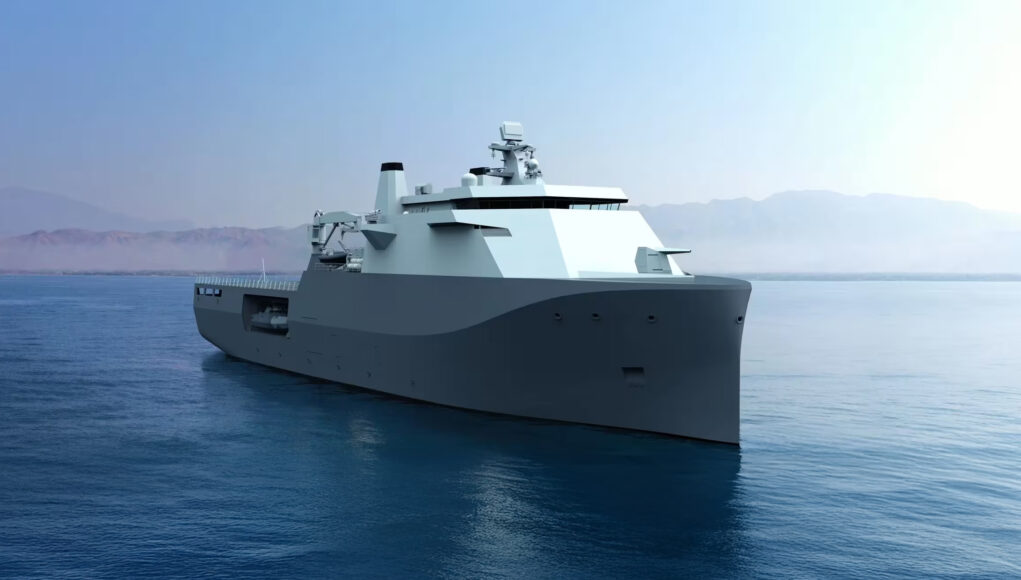


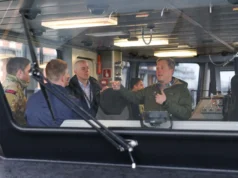
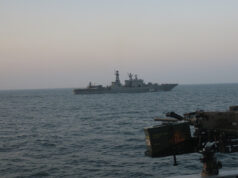
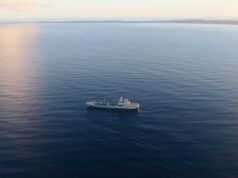
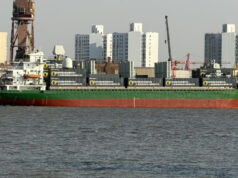
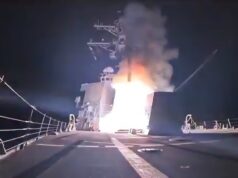
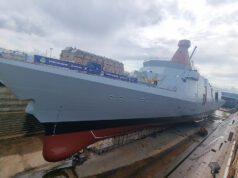
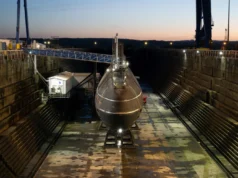

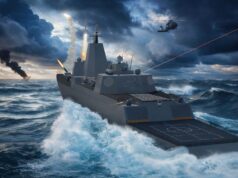
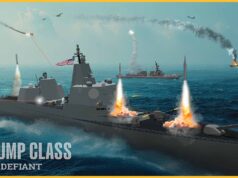

This is slightly off topic, but is the defence community generally in consensus in believing that the Type 32 will in all likelihood not happen? In that case, the MRSS really should offer something more defensible and hardened than Damen’s design. A Bofors 40mm Mk4 (rather than Phalanx) seems to be a good choice off the bat, and preferably a couple of them at least. A Sea Ceptor farm could perhaps be ported over from the Type 31 frigates when (if ever) they receive their Mk41 upgrade to give the MRSS an air defence capability.
Makes no sense as it does not meet the criteria and we have a much better British option design by BMT and built in Belfast.
We have no need of 6 small or medium sized vessels especially unprotected one.
Steel is cheap and air is free but anti ballistic missiles are expensive.
That all points to two at a push three large vessels with one being forward deployed in the Indian Ocean and One or two on stand by for the Euro Atlantic Area.
Exactly why even look at it , it’s no good for what we need
Agree reviewed both types the BMT design looks robust and able to defend itself or contribute towards a wider task forces defence. The RN needs to avoid opting for a larger number of smaller less capable ships.
Yes might as well just get converted Ferries of that is what they want
You think we are capable of building ferries, do you?
The article forget to answer the crucial question: is it cheap? And more importantly will it still be cheap once the Navy have finished gold plating it? The closer the original design is to the requirement, the less opportunity for the Navy to mess about with it, and the more likely it will be successfully purchased within the budget (look at the Constellation class). In the other direction some politico could tell the Navy their standards are too high and mandate commercial, and we end up with a deathtrap during a hot war. Agreeing on a sweet spot, that will be the trick.
Going way outside the box, what about something like the Japanese’s Kaga? Or would overall tonnage, a flight deck that all but the military would claim makes them a mini QE class(!!) cause a conniption? It could presumably do everything the Enforcer class can do including command and medical roles and deploy far greater air assets (up to 5-6 helicopters) in support of litoral ops. I’m assuming though this could be infinitely more expensive? Plus our relationship with the Japanese is going from strength to strength.
Kaga lacks a well dock, but I would say you are along the right lines. The French Mistral or Spanish Juan Carlos are both similar but have a well deck. The Albion shape isn’t that great for efficiency of volume and lacks the helicopter capacity needed for an amphibious landing as helicopters are increasingly being looked at to land soldiers. 1 Mistral carries more vehicles than both albions, around the same soldiers and about 25 helicopters. The Juan Carlos is bigger but carrier slightly more and is capable of STOVL aircraft as well.
Going off 2018 USD the Mistral was about 580 million a ship, Juan Carlos 540 million and Albion 500 million, which shows just how much more cost effective a helicopter ship with a well deck is than the classic Albion design.
Going way outside the box, what about something like the Japanese’s Kaga? Or would overall tonnage, a flight deck that all but the military would claim makes them a mini QE class(!!) cause a conniption? It could presumably do everything the Enforcer class does including command and medical roles and deploy far greater air assets (up to 5-6 helicopters) in support of litoral ops. I’m assuming though this could be infinitely more expensive? Plus our relationship with the Japanese is going from strength to strength.
My bad. I apologize but I was under the impression this class had a well deck capability. So please ignore my previous post!
Doug S, Possibly a Dokdo class from the South Korean Navy could be a good fit. In my personnal opinion
Another day another concept another tease!
The big problem that nobody wanted to acknowledge was that the old UK amphib capability was designed for a very permissve environment.
Ocean was a glorified ferry
Bays are of a better standard
Albions were of a much better standard but only armed with a pair of 30mm
They were supposed to operate with an Invincible and depended on having combatant units [plural] that could do support NGS and AAW so basically some kind of mini SG. Which was fine when we had loads of frigates and loads of destroyers in the 1990’s when this was all dreamed up.
None of that is vaguely realistic now so buying Bays MkII doesn’t appear to work either. So I don’t get how this is a realistic proposition as by the time you take a hull like this and MISPEC it you might as well start from scratch.
Totally agree, especially your opening sentence. Also, by the time that the Damens have been upgraded to give some defensive credibility and a strike component there is no way we would ever get six funded.
It actually all depends on the future of the Royal Marines. As I understand it they have given up Brigade sized operations and are now orientated towards small scale, stand off raiding operations so the amphibious platforms need to fit that operational window. On top of that these ships need to have the ability to operate in secondary roles such as disaster relief, medical evacuation and helicopter training platforms. That necessitates that they have a large flight deck with embarked helicopters (flying them off the carriers for cross decking just removes the carrier from it’s primary function), a dock capable of launching next gen landing craft, a large adaptable mission space for troops/stores/hospital and a command centre. Furthermore they need to be survivable, both in terms of build and weapons fit (a mix of guns (bofors 40mm?) & air defence missiles (a Sea Ceptor mushroom farm?). How many do we need? Theoretically 6 to replace the Albions, Ocean, the Bays & Argus but that is wishful thinking. The need is for 1 on each standing amphibious group station, north & south, which means 4 if you rotate them plus another for secondary tasks as explained above. That would be 5 but I don’t see us being able to afford & crew more than 3.
So which design? The first thing to note is that if we were still in the large scale amphibious game then the stand off capability and troop space of a helicopter assault ship makes much more sense but that is alas no longer the case. For our envisioned raiding operations we will still need as much aviation capability as is possible so I’d be looking at the larger end of available solutions; the Damen Enforcer 180 or similar. What ever they choose they need to get a move on and they need to work out which yard/s are going to get the work. Expect an announcement this autumn.
Can we just Fast Forward FWD 10 years what if anything we might or might not actually get ?
All these Support Contracts, Conceptual designs, Frameworks, Quotations and fantasy wish lists don’t add up to a heap of Bull Pizzle.
FFS just get on and order stuff and make it quick.
Ark Royal, Teranis, Vixen, T32, T91, T83, MRSS the list is endless.
All talk and no action.
On a positive point, finished the bathroom, no leaks.
Job Done
(still no leaks).
Lidl do a well priced leek.
Indeed and a Veg Box every now and then for £1.50, It’s enough to feed a family of Vegans or Rabbits for a month.
Yes but does the bathroom have Mk41 VLS or is it just FFBNW?
Very Large Shower ?
Yup, we like to Quad pack.
I would like the RN to look at launching SPEAR3 from Lockheed Martin ExLS VLS. It is used to launch CAMM, but can also launch Hellfire & JAGM.
Wouldn’t fit in the bath tub!
‘An Enforcer adapted for British use would need substantial upgrades’
ALERT! ALERT! ALERT!
MOD gold plating procurement fiasco incoming.
It seems to me that there are two distinct roles involved here.
1. A bespoke vessel for the Marines in their new raiding role. While it will only need to carry one or two commando companies and supporting troops, so maybe 250-300 in the embarked force, it will by ots nature need to be a significant warship. This because:
– it will have to be able to operate in a hostile zone, so needs to be built to military, not commercial standards
– it will need to be able to operate both helicopters and landing craft, to give the force the tactical option of assault by sea or air, or both
– to do so, it will need a well dock to harbour the new CICs and also a couple of LCUs or LCVPs for logistic support, medevac, etc. Plus enough helos to transport a company in one lift, so 4 Merlin HCs
– it will need to be able to operate solo, as there are unlikely to be any spare escorts available, other than perhaps a T31. Which means it has to be sufficiently well-armed to handle the air threat, to detect and deal with underwater threats from subs and UUVs and to combat enemy warships and provide some NGS.to support the raiding party. It will also need UAVs for reconnaissance. A 54mm gun and a couple of 30mm cannons will not be enough.
2. A larger mutirole ship.for larger amphibious operations, such as landing an army battle group in a non-permissive area, which can also serve as a command , hospital, humanitarian relief role and as a mothership for UAVs, UUVs and MCMV.
It would need to follow the same criteria regarding military build specs, rotary and well dock, well-armed enough to operate with a minimum n7mber of escorts, etc. I can’t see beyond a flat-top LPH/D for this role. A Mistral lookalike might fit the bill, smaller than the Canberra but I’d think quite sufficient for our needs.
So 3 LPHD to replace Albion, Bulwark and Argus, and three smaller ships to replace the Bays to support the RM raiders, one North, one South, one in refit/maintenance/reserve.
Against that tapestry, am finding it hard to see what role and value an Enforcer or Ellida-type vessel would add.
You Sir! Yes you!
You seriously, deleteriously, neglectively, under estimate the threats this country must meet in the future and that means 12, yes, TWELVE MRSS with the rule of 4 meaning 3 will be at Sea with enhanced Cmdo boarded, as well as associated Helo.
Of course the Cmdo must also be on a roulement, so I calculate an additional 4 RM Commando will be needed with all the fire support and logistics that entails.
I do not for one moment, countenance the re-establishment of the Brigade. No Sir, nothing less than a Division of the finest Royal will answer the bill!
Can I count on your support, good Sir? Hurrumph.
How high on the list of priorities is MRSS, in whatever form is ultimately chosen?
We cannot make full use of the QEs because we can’t/ won’t afford enough F35Bs.
We can’t provide adequate protection to the carriers because of the lack of escorts.
We can’t fully sustain a CSG because of a lack of FSS capability.
We can’t get SSNs to sea because of a maintenance backlog.
We have barely started the uparming of T45 and T 31 upgrades are just an intention.
We haven’t replaced lost minehunting capability.
Against these needs, ordering new ships to support an RM force moving to a small scale raiding role seems relatively unimportant.
And if we really need LPDs, why are we selling off the Albions for peanuts?
The RN is giving the impression it doesn’t know what it’s doing.
This
The idea that MRSS might be kicked into the long grass is heresy, but in the current economic climate is a real possibility. We will learn more when the defence industrial strategy comes out. A T31 with a few more Ceptors and NSM, paired with refurbed Bays might be a credible alternative in the short term. Also, the 3 FSS ships are something like 40k tons. Could they be designed with a large flight deck to carry a significant helicopter deployed force ; give them a secondary LSS function without impacting their primary role?
There is the QEC for a significant helicopter force.
I’d keep the FSS out of it to concentrate on their replenishment role.
The ship looks fantastic. I do wonder what passive survivability upgrades will involve in terms of structural integrity, flamability, damage control, firefighting etc., but, as someone pointed out, we had no trouble sending essentially civilian ships into harms way in the past. What bothers me is the whole company level Marine raiding concept. What effects are that company expected to deliver that warrants building (and potentially losing) a decent sized ship and risking several large helicopters and Apaches, plus, presumably vessels and fixed wing assets escorting them. I can see a lot more utility for drug enforcement, disaster relief, anti-piracy etc. in peacetime, but, as someone pointed out, a smaller number of larger vessels would tend to be more efficient in those roles.
I have a feeling that the point someone else made on permissible environments is key: Unless you’re the USMC and can afford to heavily escort everything, isn’t it pie in the sky to be pursuing solutions like this? Looks a bit like more capital ships that we can’t afford to lose and can’t afford to protect which is a sure way to limit their use.
Unless we have a wholesale change of heart on the role, size and funding levels (ie. Back to a full amphibious Cdo Bde plus lots more escorts) am personally a fan of the concept of larger numbers of smaller multi-purpose vessels to deliver our RM capabilities and would live with the attendant compromises. Rationale:
1) avoid too many eggs in one basket in littorals
2) as mentioned we can’t afford to protect more large eggs
3) build times mean you can’t easily grow fleets in wartime
4) more hulls means more flexibility to innovate / adapt
5) i liked the BAES ASF concept
I’d say the best design so far which would need a few tweaks is the Fearless Class by Stellar Systems. Now I know they gone bust but the CEO is still active with that design for the programme as stellar Systems is still kicking until a buyer or merging.
TBH I can see the MRSS getting scrapped. It will cost too much to develop a vessel to enter hostile waters with little or no escort, and we can’t afford to build enough ships to provide an escort. Best case scenario IMHO is some glorified disaster relief vessel that allows the Marines to land and provide urgent supplies.
I think we get 4 x updated Bays and T32 to work with them TBH.
MV Ocean Trader?
Royal Navy is more like Auto Trader lately.
For sale, one owner, no longer required, lots of money spent Full Service History, many expensive upgrades, never seen rain blah blah blah.
“Oops, I did it again”.
Unfortunately your not far off really. Why worry about far off fields when they can’t stop the invasion currently underway in the Channel! About time they started going up and down the channel turning them rubber boats about as they cross the 3 mile limit. The UK in real need of being saved…………….. 🙁
I’m not aware that at any point the RN had been asked to do that (for obvious reasons).
They are not really equiped to deal with unarmed men, women and children. Not many countries would wish to sink rubber dingies and I’m not sure that the British people wish to kill to solve this issue. If we want to solve this issue we really need to do it the hard way.
A baby flattop, like the French Mistral class, makes much more sense for the Royal Navy. Such a ship would carry a similar number of landing craft and troops, but a larger aviation element, which could include attack helicopters. With space for Sea Ceptor and a couple of Phalanxes, it could defend itself from attack.
Kaga lacks a well dock, but I would say you are along the right lines. The French Mistral or Spanish Juan Carlos are both similar but have a well deck. The Albion shape isn’t that great for efficiency of volume and lacks the helicopter capacity needed for an amphibious landing as helicopters are increasingly being looked at to land soldiers. 1 Mistral carries more vehicles than both albions, around the same soldiers and about 25 helicopters. The Juan Carlos is bigger but carrier slightly more and is capable of STOVL aircraft as well.
Going off 2018 USD the Mistral was about 580 million a ship, Juan Carlos 540 million and Albion 500 million, which shows just how much more cost effective a helicopter ship with a well deck is than the classic Albion design.
If in doubt, get the big one and put more weapons on it. Ha ha. Thats if Rachel dishes out the dough.
Love how the LPDs are referred to as being “Retired.”
A cut is not a cut any more it seems, if it is rationalised, modernised, recapitalised, or more agile.
They get to play bingo on a Wednesday night – just in Brazil it seems.
The strategy to add them to the reserve list was in my view the correct way forward.
I’m not sure that Labour have much of a clue that we need ships to sail and £500 million is neither here nor there.
Personally I look at the crew size and think it is far too high.
For every single crew member you exclude there is far more room for kit, weapons and troops.
We are obsessed with some need to put people in harms way unnecessarily.
Sure I wouldn’t trust the whole exercise to ChatGpt – but use tech where it is appropriate.
This is not D-Day we are planning.
Given the lack of critical mass in the RN generally, principally frigates and destroyers and with the changes in littoral strike operations, future amphibious vessels need to transition from vessels to warships and in this instance, the Damen offering is just a steel coffin compared to the Eliida and Fearless designs.
.
.
Future amphibious designs need more ‘general’ war fighting capabilities ranging from ASuW, land-strike and of course AAW requiring both missile and gun based weapon systems.
.
.
It it unfortunate, but not surprising, that the UK MoD lacks a proper understanding of the mission set and therefore the requirements in this modern space to move forward in this programme and order the ships lacking today. As per https://www.navylookout.com/bmt-announces-ellida-strike-concept-to-align-with-royal-navy-mrss-requirement/ The UK needs to innovate and order something like the Ellida now and get a jump in this space, and as per my notes there, the order (with haste) should be for 8 not 6 warships of the class to ensure history, written by those winning has a British perspective.